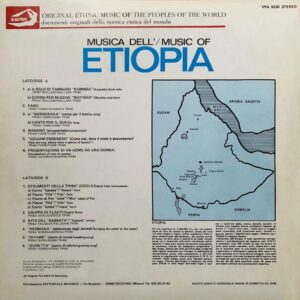The Source of Sound involves the material, the movement and the vibration from which music arises.
The Source of Sound 107
Ethiopia, a country of many sounds
An episode of Source of Sound about all the different sounds in Ethiopia, a multiethnic country where we find many different music genres and traditions with a long history. This is even more important to recognize in current times, when the Dutch government so greatly underestimate the value of culture, and have become true enemies of culture. May they crash and burn swiftly.
Bernard Lortat-Jacob and Jean Jenkins
This Source of Sound begins with a ritual Meskel song, that is sung during the Ethiopian christian Meskel festival. During this festival they celebrate how the Byzantine empress Helena rediscovered the location of the true cross of Jezus. It also marks the end of the rainy season and the beginning of the agricultural season. Dorze boys sing this song on the second day of the festivities. We listen to a recording from Bernard Lortat-Jacob.
We continue with some recordings from Jean Jenkins, who worked for the Horniman Museum in London. She made a lot of sound recordings in many countries, including Ethiopia. Her archive, filled with photos, field recordings, notes and musical instruments, is now part of the National Scottish Museum in Edinburgh.
An orchestra of 36 flute players
Next is the story about the coming of Christ, sung by the deacons or spiritual healers of the Ethiopian church. This is followed by a flute ensemble of the Gidole people from South West Ethiopia. It is an orchestra where every musician plays a flute with only one base tone. They work closely together, creating the combined sound you hear. The next piece is another Gidole flute ensemble, consisting of 36 players who perform music that sounds like a modern, very advanced composition. It is a recording of Lin Lerner and Chet Wollner.
Next, follow more of Jean Jenkins’ recordings. We start with a player of a one-stringed fiddle singing the news, followed by a choir from the Tigray region with sounds made by armpits. Then, there is a song of praise, sung to their friends by some Dorze boys, followed by a Guji choir. After that, we hear a male Ghimira duo, singing to a girl that is getting married and last but not least, an Aderi or Harari female duo from the city of Harar. Their song reminds us more of the Balkan than of the Horn of Africa.
The musical bow and a track from 1943
The second part of Source of Sound starts with a musical bow, which is in fact a combination of three musical bows in one instrument, played simply for one’s own enjoyment. It is part of the Karo and Hamer culture in Southern Ethiopia. This is followed by some Amhara songs from Northwest Ethiopia, that strongly influenced Ethiopian pop music. First, we hear a lyre solo, which is followed by a song about a missing loved one, sung by a man and woman and accompanied by a one-stringed fiddle. Then, a lyre recording from 1943, where we hear a hummed melody, recorded by Harold Courlander (the editor of Folkways). It is a recording from the Gura Valley in Eritrea, where an American airbase was located at the time. A song accompanied by a lyre, about a charming loved one, follows next. They are all recorded by Ashenafi Kebede.
Then we hear a religious song from the Dorze, sung by 15 women that are part of a St Mary group. It is recorded by Bernard Lortat-Jacob, as is the next work song, sung by seven men during the grain harvest.
The Adjuran Nomads
Last but not least, we listen to an Adjuran nomad song from Southern Ethiopia, where a man gets introduced to a woman.
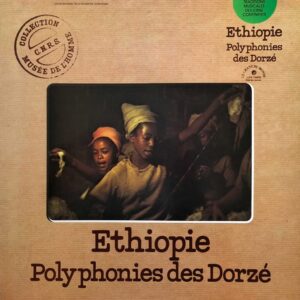
01 Maskal ritual song 1’21
LP Ethiopie Polyphonies des Dorzé
Collection du Centre National de la Recherche
Scientifique et du Musée de l’Homme
Le Chant du Monde LDX 74646, b1
Recordings Bernard Lortat-Jacob 1974, 1975
Pasture song performed on the second day
of the maskal. After singing the boys compete
with others from neighbouring districts in fights
in a village square.
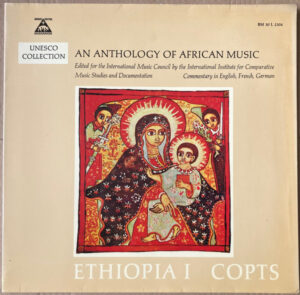
02 Debteras tell the story of Christ’s coming 2’15
LP Ethiopia I Copts
Bärenreiter Musicaphon BM 30 L 2304, a1
recorded Jean Jenkins 7-1-1965 Christmas,
Bahta Church, Addis Abeba
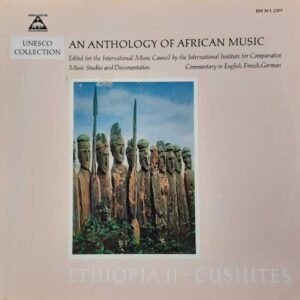
03 Flute ensemble 3’10
LP Ethiopia II – Cushites
Bärenreiter Musicaphon BM 30 L 2305, a1
recorded Jean Jenkins, South West Ethiopia, 1965
Gidole culture, Gomu-Gofa province
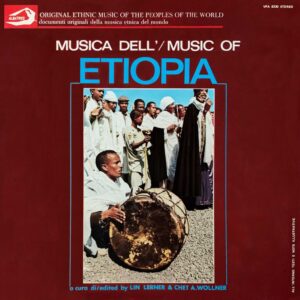
04 Gidole flute ensemble 4’34
LP Musica dell’ Etiopia
Albatros VPA 8320, b2
Italian publication of
Ritual Music of Ethiopia
Ethnic Folkways FE 4353
recordings Lin Lerner, Chet A. Wollner, 1973
Gidole culture, South western Ethiopia
36 musicians who play flutes
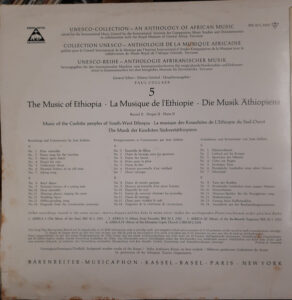
05 Masenqo player singing the news 3’31
LP Ethiopia II – Cushites
Bärenreiter Musicaphon BM 30 L 2305, b4
recorded Jean Jenkins, South West Ethiopia, 1965
Wollamo man, Soddu culture, Sidamo province
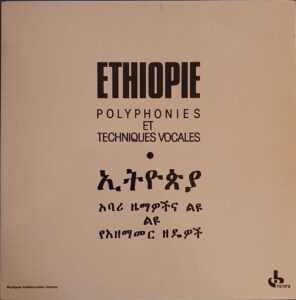
06 Ensemble Tigré 3’43
LP Ethiopie Polyphonies et Techniques Vocales
Ocora OCR 44, b7
recorded Jean Jenkins, December 1967
Tigray culture, Abi Addi, Tenbian district, Tigray province
armpit music a speciality of the Tenbian area
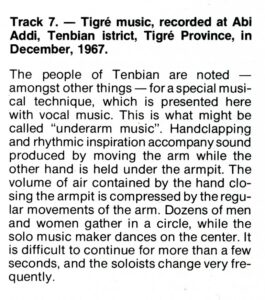
07 Boys’ dance in praise of their friends 3’33
LP Ethiopia II – Cushites
Bärenreiter Musicaphon BM 30 L 2305, b1
recorded Jean Jenkins, South West Ethiopia, 1965
Dorze culture, Chencha region, Gomu-Gofa province
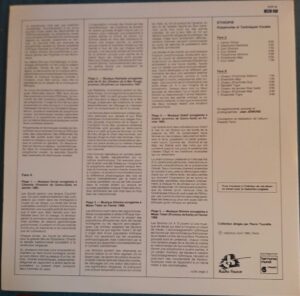
08 Choeur d’hommes Guji 3’34
LP Ethiopie Polyphonies et Techniques Vocales
Ocora OCR 44, b3
recorded Jean Jenkins, January 1965
Guji culture, Yavello, Arero district, Sidamo province
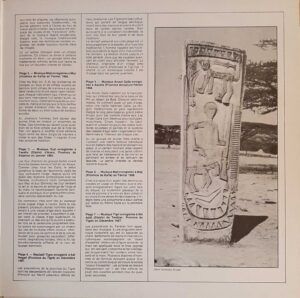
09 Duo Ghimira 1’50
LP Ethiopie Polyphonies et Techniques Vocales
Ocora OCR 44, a3
recorded Jean Jenkins, February 1968
Ghimira culture, Mizan Teferi, Kaffa province
Two young men singing to a girl who is about to get married
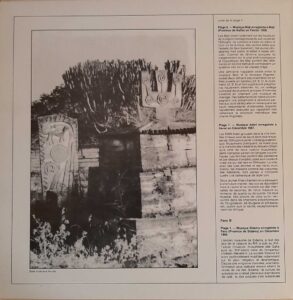
10 Duo Aderi 1’59
LP Ethiopie Polyphonies et Techniques Vocales
Ocora OCR 44, a7
recorded Jean Jenkins, December 1967
Aderi culture, Harar city
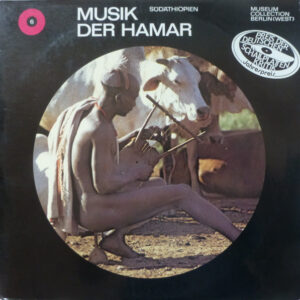
11 Tingle Apho Musical bow 3’07
LP Music of the Hamer South Ethiopia
Museum Collection Berlin (West) MC6, a1
recorded by Ivo Strecker, 1970-1976
Karo culture, forest, lower Omo river
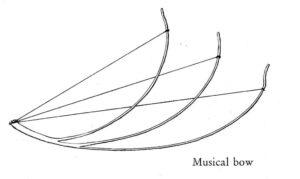
12 Yefikir Ke Taima 2’58
Melaku Gelaw: krar (lyre)
LP The Music of Ethiopia. Azmari Music of the Amharas
An Anthology of The World’s Music AST-6000, a2
Recordings Ashenafi Kebede, 1967
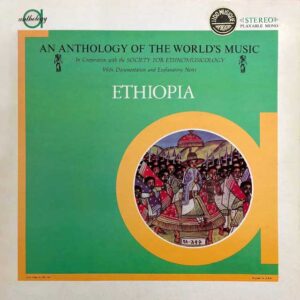
13 Tizita 5’04
Getameday Abebe: vocal, masinko (fiddle)
Asegedech Mekonnen: vocal
LP The Music of Ethiopia. Azmari Music of the Amharas
An Anthology of The World’s Music AST-6000, b2
Recordings Ashenafi Kebede, 1967
Song of a missing or broken-hearted lover.
The title word means reminiscence.
A song of the province Shoa
Also the name of one of the four Amhara modes
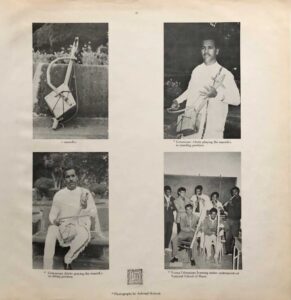
14 Shemonmuanaye 2’51
My Charming One
Melaku Gelaw: vocal, krar (lyre)
LP The Music of Ethiopia. Azmari Music of the Amharas
An Anthology of The World’s Music AST-6000, b1
Recordings Ashenafi Kebede, 1967
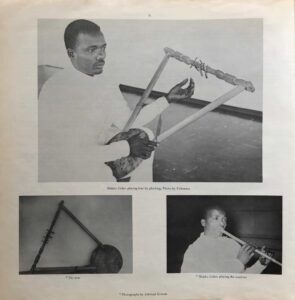
15 Masonquo solo 1’57
LP Folk Music of Ethiopia
Ethnic Folkways FE 4405, A6
Recorded by Harold Courlander 1943 Gura valley, Eritrea
6 string lyre with a hollow leather-covered sound chamber
also known as Kidrar or Kirar, string struck by a feather or
a small piece of leather. The lyre player hums also the melody.
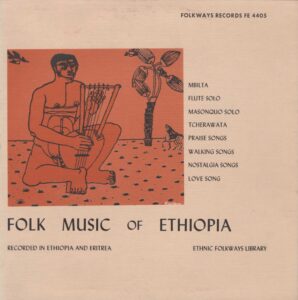
16 Song of the Mahaber festival 4’47
LP Ethiopie Polyphonies des Dorzé
Collection du Centre National de la Recherche
Scientifique et du Musée de l’Homme
Le Chant du Monde LDX 74646, a5
Recordings Bernard Lortat-Jacob 1974, 1975
Mahaber festival is an Ethiopian Christian festival
for holy people and the saints, organised by specific
mahaber organisations. This song was in honour
of St. Mary performed by 15 women belonging to
a mahaber association. Also sung at the halak’a’s
festival and during communal work
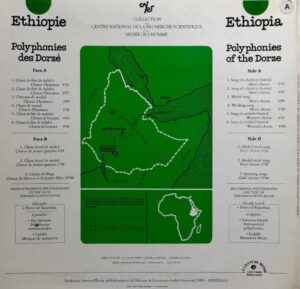
17 Work song 3’18
LP Ethiopie Polyphonies des Dorzé
Collection du Centre National de la Recherche
Scientifique et du Musée de l’Homme
Le Chant du Monde LDX 74646, a4
Recordings Bernard Lortat-Jacob 1974, 1975
Grain threshing by 7 men working with large sticks
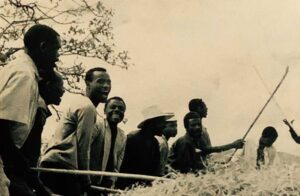
18 Formal introduction of a man to a woman 5’11
Jella Madi (leader), Hussien Hassen, Hurene Kyah,
Abdi Ebrahim, Abdula Kenteno, Addulahe Aden,
Gado Abdi, Aden Berra: vocals
LP Musica dell’ Etiopia
Albatros VPA 8320, a8
Italian publication of
Ritual Music of Ethiopia
Ethnic Folkways FE 4353
recordings Lin Lerner, Chet A. Wollner, 1973
Adjuran culture, Moyale, South Ethiopia
